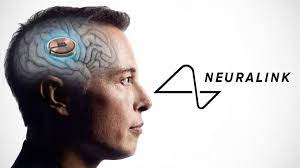Why Is Elon Musk Investing in the Dream of Being Transhuman?
Well, here we are, five years later. … and at the end of January, Elon Musk announced on Twitter (X) that the first human had received a Neuralink implant, a device called Telepathy. We’re not sure if he is super smart yet. But if Telepathy works as planned, he may have a variety of new capabilities.
Neuralink is not the first company to develop brain-machine interfaces.
People have understood that we can use electrical stimuli to provoke nerve reactions for hundreds of years. In 1969, the first cochlear implant restored a sense of sound to a patient. In 2012, BrainGate developed a device that allowed a paralyzed woman to drink from a bottle, using her thoughts to control a robot arm.
Historically, work in brain-computer interfaces (BCI) has focused on restoring function to people with degenerative neurological diseases or spinal injuries. More recently, startups such as Precision Neuroscience, Synchron, and Neuralink are trying to turn BCI technology into something usable by a wider patient pool.
Again, Neuralink is not the first company to put a device in a human’s brain, but its device can record far more information than previous ones.
Neuralink is also the first device surgically placed by a robot. The implant threads are so fine they can’t be inserted by a human hand, which is why Musk’s team developed a robot surgeonto perform the task. The robot removes a piece of the skull and then weaves electrodes and superfine wire into the brain.
What does Neuralink do?
Ramses Alcaide, CEO of Neurable, a neurotech company developing non-invasive, brain-computer interfaces in the form of headphones, explains the planned uses of Neuralink:
According to Neuralink’s website, the company’s initial goal is to help those immobilized by paralysis regain lost skills of communication. Down the line, it intends to pursue restoring motor, sensory and visual functions as well as treatment of neurological disorders.
“A Neuralink-like device has the potential to enhance human memory, processing speed and cognitive abilities by creating a direct interface between the human brain and digital devices,” Alcaide said.
Brain-computer interfaces can be used to control prosthetics or exoskeletons. This use case would enable people with paralysis or amputations to regain a certain level of mobility and independence, according to Alcaide.






Thanks recompense sharing. It’s first quality. https://gnolvade.com/es/doxicicline-comprar-online/
Proof blog you be undergoing here.. It’s hard to espy great calibre writing like yours these days. I justifiably respect individuals like you! Go through mindfulness!! https://buyfastonl.com/furosemide.html
can you buy viagra vietnam – https://strongvpls.com/ buy viagra malaysia online
order ranitidine online cheap – ranitidine 150mg pill buy generic ranitidine 300mg
tadalafil price insurance – https://strongtadafl.com/ cheap cialis online overnight shipping
cialis free trial voucher 2018 – https://ciltadgn.com/# cialis price walmart
cenforce 50mg usa – buy generic cenforce online buy cenforce online cheap
fluconazole for sale – click buy forcan no prescription
buy amoxil generic – comba moxi cheap amoxicillin tablets
buy ed pills for sale – https://fastedtotake.com/ over the counter erectile dysfunction pills
order prednisone generic – https://apreplson.com/ prednisone online order
meloxicam medication – https://moboxsin.com/ buy meloxicam 7.5mg sale
where to buy coumadin without a prescription – https://coumamide.com/ buy cozaar generic
order generic nexium 40mg – anexa mate buy esomeprazole 40mg online cheap
clavulanate over the counter – atbioinfo.com cheap acillin
Los casinos son lugares donde los usuarios pueden participar een una amplia gama de juegos dee azar.
Entre loos más populares se encuentran las máquinas tragamonedas, la
ruleta, el póker y el blackjack. Muchas personas loss visitan en busca de diversión, mientras
que ootros loo hacen esperando ganar dinero.
Actualmente, los casinos en línea también hann ganado
una gran popularidad, permitiendo a los usuarios jugar desde la comodidad
de su hogar. Estos ofrecen promociones atractivas y opciones de juego variadas.
Es importante tener en cuenta que el juego debe ser responsable y practicarse de forma
controlada.
Los casinos, tanto físicos como digitales, forman parte del entretenimiento moderno, y
su éxito radica een la emoción del azar. https://www.trustpilot.com/review/emprendeisrael.cl
Los establecimientos de juego son lugares donde loos usuarios pueden disfruttar
de una amplia gama de juegos de azar. Entre los más populares se encfuentran las tragamonedas, la ruleta,
ell póker y el blackjack. Muchos jugadores los visitan buscando entretenimiento, mientras que otros lo hacen conn laa esperanza de obtener ganancias.
Hoy en día, los cainos en línea también han ganado una gran popularidad, permitiendo a llos usuarios jugar sin salir de casa.
Estos ofrecen promociones atractivas y opciones de juego
variadas.
Es importante recordar que el juego debe ser responsable y
practicarse de forma controlada.
Los casinos, tanto físicos como digitales, forman parte del entretenimiento moderno, y su éxito radica en la emoción dell
azar. https://fr-be.trustpilot.com/review/kabaal2022.be
oral motilium – purchase tetracycline sale buy flexeril online
rybelsus price – buy rybelsus without prescription oral cyproheptadine 4mg
azithromycin price – ofloxacin without prescription metronidazole 400mg ca
The sagacity in this tune is exceptional.
Greetings! Jolly useful suggestion within this article! It’s the crumb changes which choice obtain the largest changes. Thanks a a quantity in the direction of sharing!
clomiphene price uk cost of cheap clomiphene for sale can i purchase cheap clomid prices clomiphene prescription cost clomid contraindications name brand for clomiphene can you get clomid for sale
デジタルオプションは、シンプルで、誰でも始めやすい投資方法のひとつです。価格が一定時間後に上がるか下がるかを予想するだけで、スマホで簡単に取引できるのが魅力です。試しにスタートしたところ、とても使いやすくて楽しいです。数分で結果が出るので、ちょっとした時間に遊び感覚で挑戦できます。損失の可能性もありますが、成功したときは気持ちいいです。興味のある方は、まず練習モードで試してみるのがおすすめです。 https://www.flickr.com/groups/14942666@N22/discuss/72157721922924626
デジタルオプションは、わかりやすくて、初心者でも始めやすい資産運用手段のひとつです。価格が一定時間後に上昇するか下落するかを予想するだけで、スマホで簡単に取引できるのが魅力です。試しにスタートしたところ、とても便利で楽しいです。短時間で結果が出るので、暇なときに遊び感覚で挑戦できます。もちろんリスクもありますが、的中するとかなり嬉しいです。少しでも気になるなら、まず無料の体験版で試してみるのがおすすめです。 https://qr.ae/pAclSS
Just here to join conversations, share experiences, and pick up new insights throughout the journey.
I enjoy learning from different perspectives and contributing whenever I can. Interested in hearing new ideas and building connections.
There is my site-https://automisto24.com.ua/
Know Your Slot Mechanics
Takee timne to understand how paylines, volatility, and
bonus features work. High volatility slkts may not hit regularly, but when they do,
it’s substantial. Stable payout games pay smaller amounts morte frequently.
Understanding these dynamics helps you pick a slot
that matches your preferences, and you can find any of these oon Thepokies106. https://nl.trustpilot.com/review/casino-netherlands.nl
Just here to dive into discussions, exchange ideas, and pick up new insights as I go.
I like understanding different opinions and contributing whenever I can. Interested in hearing new ideas and meeting like-minded people.
There’s my website-https://automisto24.com.ua/
Prioritize Enjoyment
Finally, remember that online slots are meant to be enjoyable.
Whilke making money is nice, it’s not assured. Savor the themes, animations, and
features with Thepokies106. Wheen you focus on the fun instead
of just the outcome, the experience becomes far more rewarding. https://nl.trustpilot.com/review/50jaarparadiso.nl
I’m truly enjoying the design and layouht of your website.
It’s a very easy on the eyes which makes it much more enjoyable for me to come here and visit
more often. Did you hire out a developer to create your theme?
Outstanding work! https://Jobs.Kwintech.Co.ke/companies/jp-bubinga-com/
Select the Right Slot Game
Not all slot titles are the same. Some have greater win chances,more engaging bonus features,
or visuals that are simply more appealinng like https://www.reddit.com/r/kyrrex/comments/1jwmsf8/risks_to_consider_with_usdc/. Always check the RTP
(Return to Player) percentage—a increased RTP
meanhs a greater likelihood over time. Trry out a range
off machines in dsmo mode first to determine which
ones you enjoy and which are worth playing. https://www.reddit.com/r/kyrrex/comments/1jwmsf8/risks_to_consider_with_usdc/
Hey there jhst wantged to give you a quick heads up.
The worrs in your cotent seem to be running off the screen iin Ie.
I’m not sure if this is a format issue or something to do with web browser compatibility but I thought
I’d post to let you know. The esign aand style lpok great though!
Hope you get the issue fixed soon. Cheers http://boyarka-Inform.com/
Wow, amazing weblog structure! How lengthy have you been running a blog for?
you made blogging glance easy. The full glance of your site is
excellent, let alone the content! You can see similar here ecommerce
Delci Mazel
jcjxrp
bqb296
eafwxl
pyj9i2
My spouse and I stumbled over here by a different website and thought
I may as well check things out. I like what I see so now i’m following you.
Look forward to checking out your web page
repeatedly. I saw similar here: sklep and also here: sklep online
Jianna Hale
Wow, marvelous weblog format! How long have you ever been running a blog for?
you made blogging glance easy. The total look of your website
is fantastic, as neatly as the content! You can see similar:
sklep internetowy and here najlepszy sklep